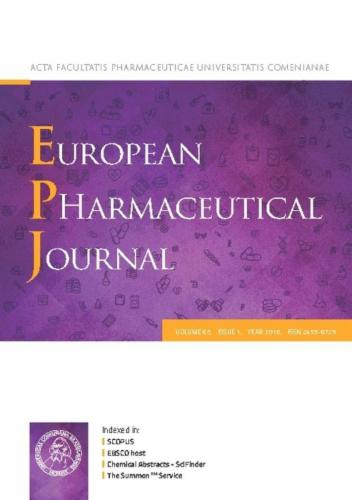Bacterial community structure and dominant species in pharmaceutical manufacturing water revealed by high-throughput sequencing
IF 4.7
3区 医学
Q1 PHARMACOLOGY & PHARMACY
引用次数: 0
Abstract
Control of the microbiological quality of water for pharmaceutical manufacturing is essential to ensure the safety of pharmaceutical products. A major issue in the quality control of pharmaceutical manufacturing water is the time required to identify microbial contaminants, which can be as long as several days using traditional culture methods. Here, we demonstrate the use of high-throughput sequencing of samples taken from a pharmaceutical water production system, using the Oxford Nanopore Technologies MinION sequencing platform. We successfully revealed the bacterial community structure and dominant species in stagnation sampling ports of the pharmaceutical water supply system. Dynamic changes in dominant bacteria were detected across different treatment stages: Phreatobacter in the city water, Methylobacterium in the reverse osmosis-treated water (>95 % of the bacterial abundance) and Ralstonia in the ultrafiltration-treated water (>93 % of the bacterial abundance). Compared with traditional culture methods, the MinION sequencing approach enabled rapid characterization of bacterial composition and prompt identification of dominant species. This cost-effective, molecular-based approach will usher in a new era of bioburden monitoring and identification in pharmaceutical water systems, in line with regulatory recommendations to implement rapid microbiological methods. Our findings demonstrate the practical application of high-throughput sequencing for comprehensive bacterial analysis in the pharmaceutical industry.

高通量测序揭示制药用水细菌群落结构及优势种。
医药生产用水微生物质量控制是保证药品安全生产的重要环节。制药用水质量控制的一个主要问题是识别微生物污染物所需的时间,使用传统的培养方法可能需要长达几天的时间。在这里,我们展示了使用牛津纳米孔技术公司的MinION测序平台,对从制药水生产系统中提取的样品进行高通量测序的使用。我们成功地揭示了制药供水系统停滞采样口的细菌群落结构和优势种。在不同处理阶段检测优势菌的动态变化:城市水中的Phreatobacter,反渗透处理水中的甲基杆菌(>占细菌丰度的95%)和超滤处理水中的Ralstonia(>占细菌丰度的93%)。与传统的培养方法相比,MinION测序方法能够快速表征细菌组成并及时鉴定优势种。这种具有成本效益的、基于分子的方法将根据实施快速微生物学方法的监管建议,在制药用水系统中开启生物负荷监测和鉴定的新时代。我们的研究结果证明了高通量测序在制药工业中全面细菌分析的实际应用。
本文章由计算机程序翻译,如有差异,请以英文原文为准。
求助全文
约1分钟内获得全文
求助全文
来源期刊
CiteScore
9.60
自引率
2.20%
发文量
248
审稿时长
50 days
期刊介绍:
The journal publishes research articles, review articles and scientific commentaries on all aspects of the pharmaceutical sciences with emphasis on conceptual novelty and scientific quality. The Editors welcome articles in this multidisciplinary field, with a focus on topics relevant for drug discovery and development.
More specifically, the Journal publishes reports on medicinal chemistry, pharmacology, drug absorption and metabolism, pharmacokinetics and pharmacodynamics, pharmaceutical and biomedical analysis, drug delivery (including gene delivery), drug targeting, pharmaceutical technology, pharmaceutical biotechnology and clinical drug evaluation. The journal will typically not give priority to manuscripts focusing primarily on organic synthesis, natural products, adaptation of analytical approaches, or discussions pertaining to drug policy making.
Scientific commentaries and review articles are generally by invitation only or by consent of the Editors. Proceedings of scientific meetings may be published as special issues or supplements to the Journal.

 求助内容:
求助内容: 应助结果提醒方式:
应助结果提醒方式:


